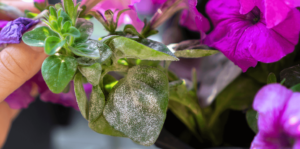White spots on your plants are a possible sign of powdery mildew. It can be challenging to tackle some of the common issues in your garden, but with a bit of knowledge, powdery mildew can be treated before it significantly affects your plants. This guide will help you identify, treat, and prevent this fungus from invading.
Regular maintenance of your plants, prevention, and quick treatment can help get them back to full health and beauty.
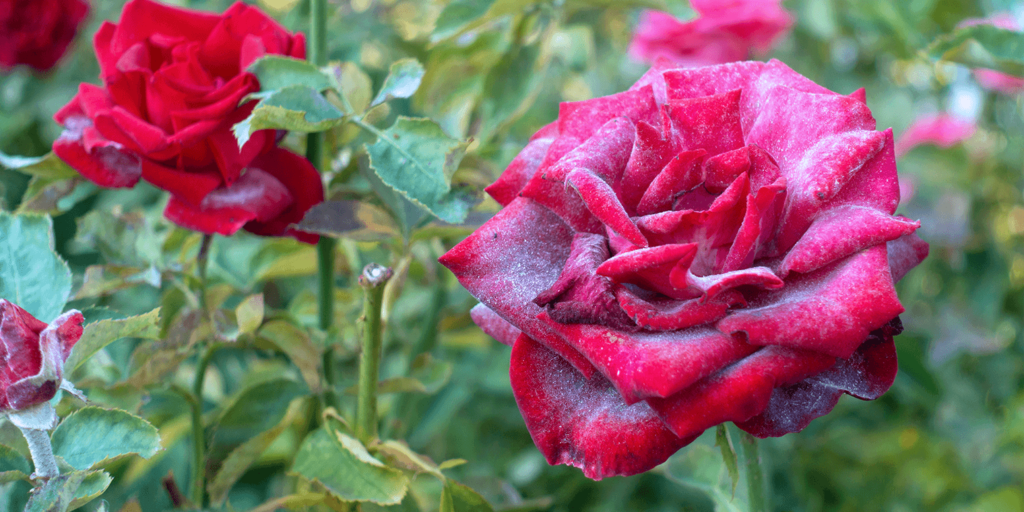
What is Powdery Mildew?
Powdery mildew is a very common plant fungus that can easily spread. It’s identifiable by the white or gray spots of powder-looking residue. It’s most commonly found on the leaves of a plant, but can also be found on the stems, flowers, fruits, or vegetables. It is most often found on plants that have suffered from a lack of air circulation, lack of sunlight, or just the right unfortunate combination of high humidity in dry climates.
How does Powdery Mildew Affect Plants?
While not likely fatal, it can wreak havoc on the health and beauty of your plants. The mildew prevents the plant from getting all the necessary water and nutrients it needs to thrive. Some signs that powdery mildew is taking a toll are:
- Yellowing, drooping, dying, disfigured leaves
- Withered appearance
- Slow growth
- Smaller blooms
Regular maintenance of your plants, prevention, and quick treatment can help get them back to full health and beauty.
Powdery Mildew in Florida Gardens
No plant is impervious to mildew. There are a few garden favorites that are more susceptible. If you regularly struggle with this fungus, you may want to reconsider these plants for your garden. Alternatively, you can keep an extra close eye while doing regular garden checks.
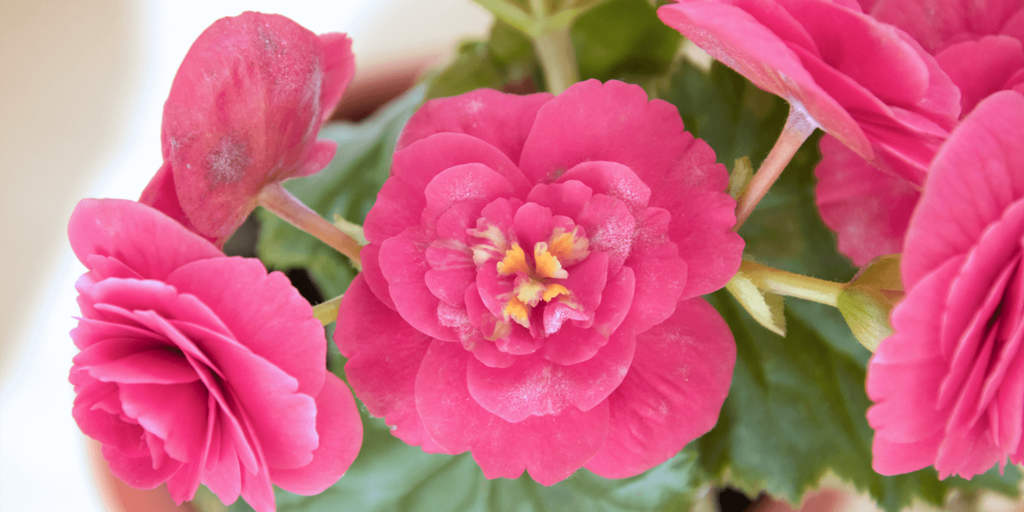
Flowers susceptible to powdery mildew:
- Begonias
- Roses
- Dahlias
- Lilacs
- Garden phlox
- Sunflowers
- Zinnias
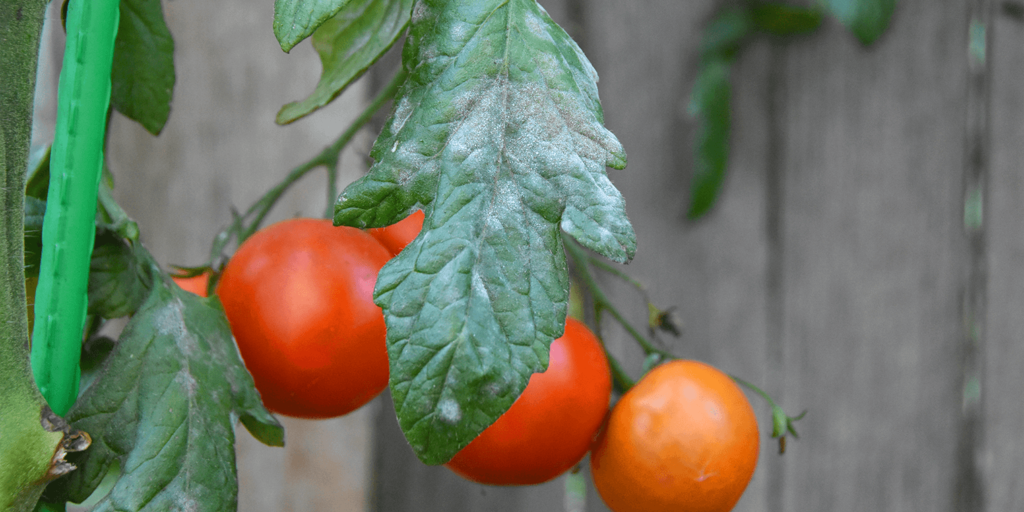
Vegetables susceptible to powdery mildew:
- Lettuce
- Squash
- Peppers
- Tomatoes
- Cucumbers
How to Treat Powdery Mildew
There are a few schools of thought when it comes to addressing powdery mildew issues. While there are some at-home remedies, we recommend a few tried-and-true methods for treatment.
- Prune or trim infected and damaged areas, and dispose of them away from the garden to avoid fungal spread.
- Treat the plant with neem oil.
- Treat with a fungicide containing potassium bicarbonate.
- Avoid overhead watering as it can spread spores and also creates an ideal humid environment for the fungus to thrive.
Always follow directions on any treatment option you use. Consider reapplying the fungicide, as directed, every 7-14 days to continue to prevent recurring instances of powdery mildew.
If you’re in a bind and need to urgently treat powdery mildew, you can try mixing together a few household items to temporarily treat the issue—but we’d recommend you come see us instead.
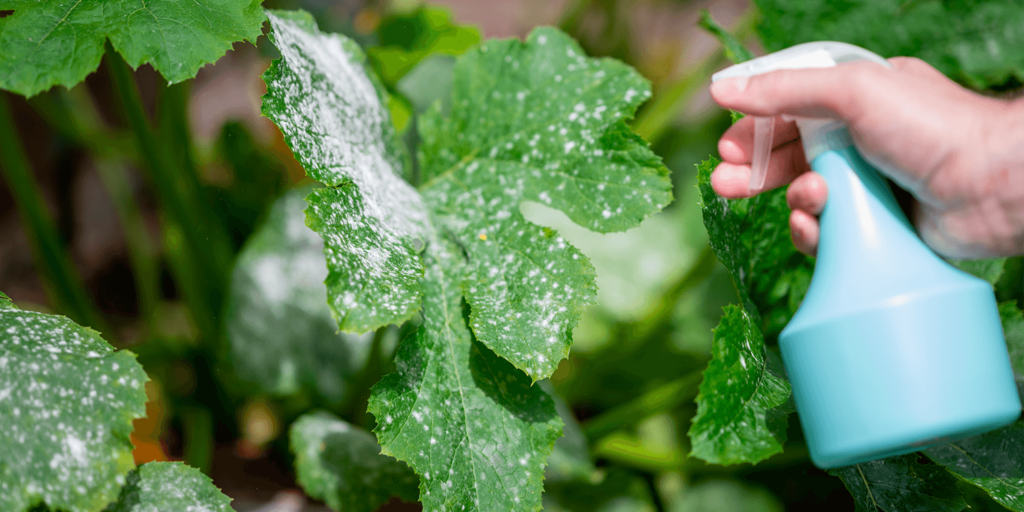
- Milk Treatment: Mix 2-3 parts water to one part milk. Add to a spray bottle and spray the plant thoroughly.
- Baking Soda Treatment: Mix ½ teaspoon liquid soap, 1 tablespoon of baking soda, and one gallon of water. Use this mixture in a spray bottle and ensure it gets on all areas of the plant.
- Potassium Bicarbonate Treatment: Use one tablespoon of the potassium bicarbonate with ½ teaspoon of liquid soap and 1 gallon of water. This mixture will be a bit stronger than the baking soda treatment and can be more effective in treatment as opposed to prevention.
Preventing Powdery Mildew
As mentioned, prevent powdery mildew from taking over by proactively applying fungicidal treatments. The best way to prevent powdery mildew altogether is by keeping up on your plant maintenance:
- Place plants in their optimal amount of sunlight.
- Keep plants spaced out according to their needs: overcrowding can lead to illness.
- Thin out thicker plants to improve air circulation.
- Thoroughly clean and disinfect your gardening tools to prevent cross-contamination.
- Look for varieties with a resistance to powdery mildew.
- Track your application of fungicidal treatment. Apply regularly for best results.
- Avoid overhead watering.
Powdery mildew is not a death sentence for your plants and requires just a bit of maintenance and know-how to keep it at bay. If you’re looking for more support in preventing and treating powdery mildew and other plant issues in Fort Lauderdale, come visit us. We’re always here to help.

